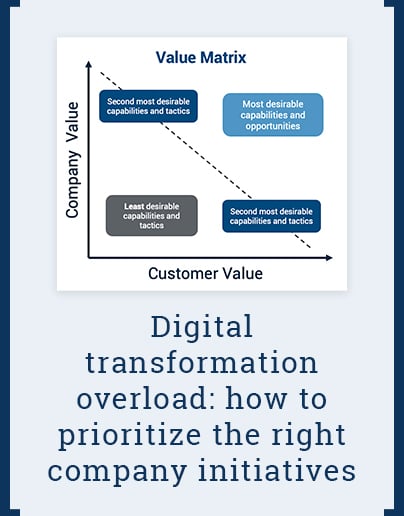A partner of ours took a new job at a Fortune 500 healthcare company and found himself inheriting over 100 digital initiatives. All required investments of both attention and money, an impossible task if he wanted each one to be done well. Which ones were the right ones to focus on?
Kill everything in your backlog that isn’t aligned with your company’s strategic priorities
Rather than saying, “everything is important” (one of the most common leader pitfalls—aka, making no decision at all about priorities), we helped him chop the list in half. We did this by first removing all initiatives that did not further the company’s outlined strategic goals.
More times than you’d think, an initiative is started because it “sounds like a good idea” but in reality, it has no tie to the company’s vision for the future. What that signals is that while it may be a good idea, it’s not a good idea for your company right now.
Systematically measure each initiative's value and effort
There are multiple methods for organizations to prioritize their efforts that go into the company backlog. The key to prioritization is to find the model that works best for your specific organization and teams. Using a prioritization framework that takes into account your company, your customer, and the development effort to complete allows a more thorough prioritization.

Download our innovation readiness evaluation.
When our partner conducted his prioritization exercise, he took the remaining initiatives that were aligned with the company’s strategic priorities and filtered them across two axes: value and complexity. The value was measured in terms of the initiative's value to both the company and its customers. Complexity was measured in terms of how complex the initiative's development and integration into the rest of the business would be.
Here’s how it works:
- Prioritize your list of opportunities first across two axes or parameters: company value vs. customer value
-
- Company value: How valuable is this opportunity for the company?
- Customer value: How valuable is this opportunity to our customer?
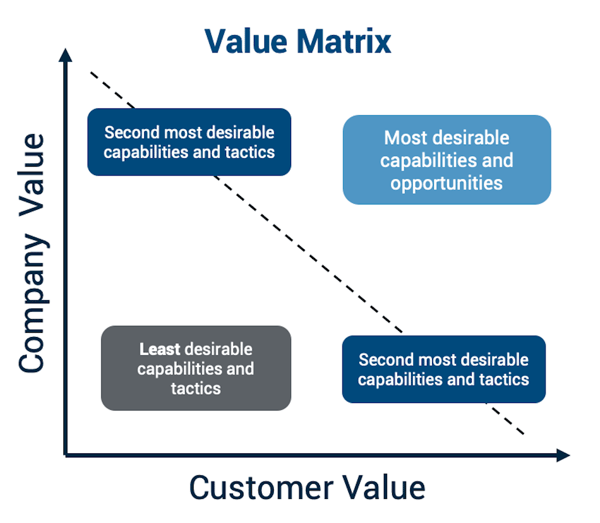
-
- Next, prioritize those same opportunities based on the type and amount of complexity it will take to build or complete
-
- Company Complexity: How feasible is this to operationalize within our company?
- Technical Complexity: How complicated is this to build?
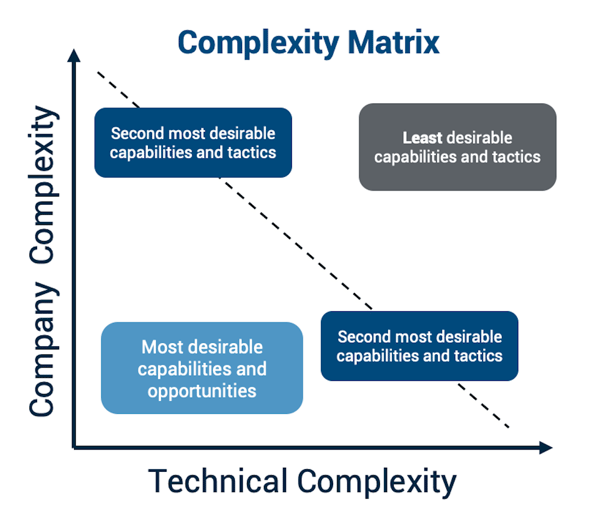
-
- Finally, aggregate the first two steps to prioritize into a final matrix of Net Value and Net Complexity
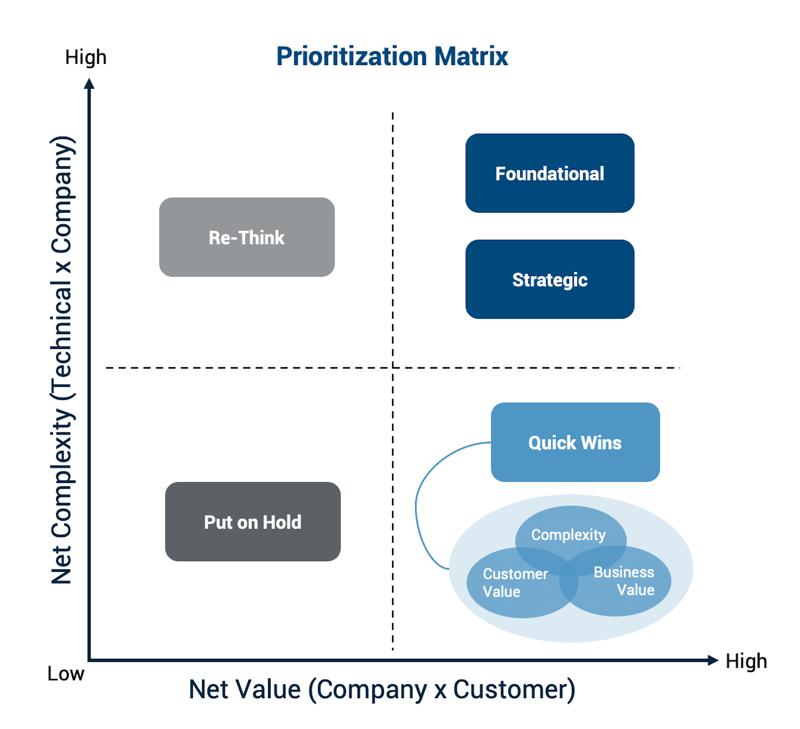
This final step will segment your initiatives into four categories:
- Put on Hold: these initiatives have an overall low value for the company and/or your customers, but they are also not hard to do. These can go into the backlog and be tackled only if nothing more valuable is available.
- Quick Wins: these initiatives have high value for the company and/or your customers and they are not hard to do. These are the quick wins, or low hanging fruit, that should be tackled right away.
- Foundational or Strategic: these initiatives have high value for the company and/or your customers, but they will take a more significant amount of effort (and time) to complete. These are likely the more foundational (e.g. integrating disparate data sources) or strategic (e.g. starting an innovation lab) initiatives that are critical to your company’s overall success. A low number of these should be started right away, along with a mixture of your quick wins for balance.
- Re-Think: these initiatives overall offer low value to the company and/or your customers and are difficult to do. These should be shelved, or cut completely until they make more sense for the company to focus on.
By focusing your company’s efforts on a healthy distribution of ‘Quick Wins’ and ‘Foundational or Strategic’ work, you set both the company and the individual initiatives up for better success. (Stay tuned for an upcoming post on how we use the 3 Horizon’s Model to also help with this).
We’ve found that this exercise is a great alignment activity to do with stakeholders during a collaborative workshop. Innovation Game’s How-Now-Wow Matrix is a favorite go-to of ours that mirrors this concept well during workshops. By allowing everyone to participate in assigning value to initiatives and choosing where on the matrix an initiative lives, you create immediate support. This also provides a real-time opportunity to debate the placement of an initiative if someone has a different perspective on an initiative.
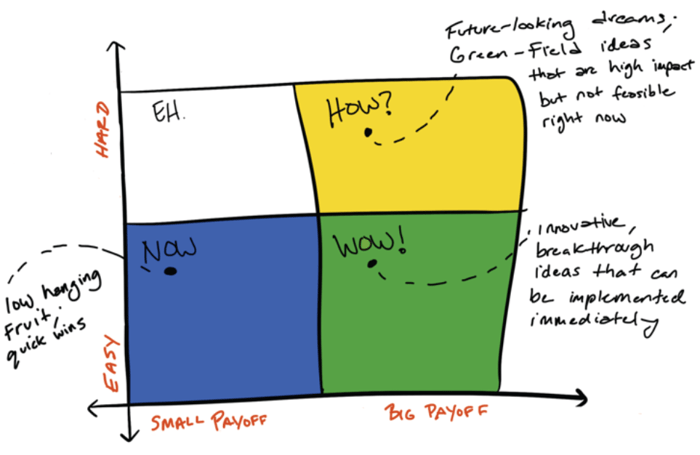
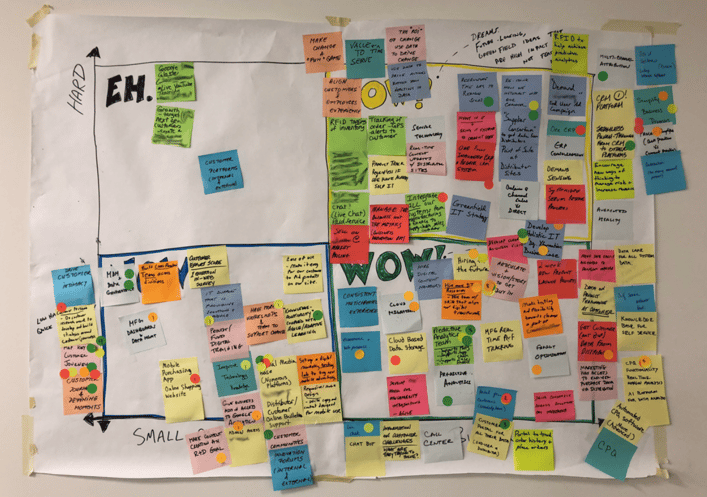
Note - Prioritizing this way is best for high-level prioritization of efforts. When your team need to prioritize specific tactics or features, using a systematic, predictable, and outcomes-driven framework such as RICE or WSJF is better suited.

